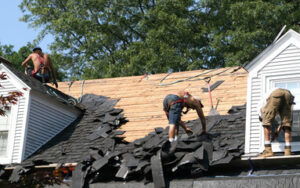Unlike restorative dentistry, which addresses underlying problems, Cosmetic Dentistry Las Vegas improves the look of teeth. Treatments like cosmetic dental bonding and porcelain veneers close gaps, cover chips and stains, and enhance color, shape, and size.

Before choosing a cosmetic dentist, seek recommendations from friends and family, and read online reviews and testimonials. Also, remember that most purely elective procedures are not covered by insurance.
Filling In Tooth Gaps
While traditional dental treatments like fillings, cleanings, and exams focus on preventing disease, cosmetic dentistry focuses on improving aesthetic flaws in teeth, gums, and bites. Even the healthiest, straightest teeth can have cosmetic imperfections that impact your self-image. A skilled cosmetic dentist can transform these issues with a variety of treatments that address color, symmetry, and alignment.
For example, gapped teeth (also known as a diastema) can be caused by several factors including genetics, missing or undersized teeth, a misaligned bite, and habits like thumb sucking or tongue thrusting. These gaps are often noticeable and can affect your self-image, especially if they are wider than normal. Fortunately, a cosmetic dental treatment can fill in these gaps, making your smile more uniform and attractive.
During this procedure, a tooth-colored resin is applied to the damaged area of your tooth and then hardened using a special light. This material, also referred to as composite white fillings or tooth bonding, is shaped and colored to match the rest of your tooth, giving you a seamless smile. Gaps can be filled in as one treatment or in multiple visits to your dentist, depending on the extent of the damage and its cause.
Another treatment for gapped teeth is a crown, in which a dental professional builds up the area with a porcelain cap that covers your existing natural tooth structure. This type of crown can close a small gap and may be used in conjunction with other procedures, such as dental implants or veneers. However, it is important to note that composite resin can stain over time and therefore requires a regular brushing and flossing routine to keep it looking its best. Porcelain veneers, on the other hand, can resist stains better, requiring less maintenance.
Fixing Crooked Teeth
Crooked teeth can have aesthetic and functional problems. They are hard to keep clean, which can lead to cavities and gum disease. They can also cause discomfort when eating or speaking. The good news is that cosmetic dentistry has many treatment options for crooked teeth.
The most common method of fixing crooked teeth is braces. Braces will realign the teeth over time, and they are available in a wide variety of styles and materials to fit your needs and budget. For example, you can choose from traditional metal braces, ceramic braces, self-ligating braces, or lingual braces.
Another option for fixing crooked teeth is veneers. These are porcelain covers that go over the front of your teeth to make them appear straighter. They are a cheaper alternative to braces and can usually be completed in less time than braces require.
Sometimes, only one tooth is crooked and does not affect the overall look of your smile. For this reason, some people choose to have dental bonding done on a single tooth to correct the misalignment and improve its appearance.
If you want to add some extra protection and cleaning power to your oral hygiene routine for crooked teeth, consider using an interdental brush or a Waterpik. These tools can help remove food debris from the tight spaces between crooked teeth.
Whether you need to fix a chipped tooth, whiten your teeth, or get rid of your crooked teeth, the best way to find out which cosmetic treatments are right for you is to schedule a consultation with your dentist. When you meet with a dentist, check their qualifications and experience performing cosmetic procedures, as well as their reputation for excellence. You should also ask about their office hours and if they accept your insurance or offer flexible spending accounts and payment plans.
Whitening Your Teeth
One of the most common cosmetic dental issues is tooth discoloration. Whether surface stains from coffee and tea, red wine, or smoking or deep staining from genetics or medication, this problem can make teeth look dull and discolored and detract from the overall quality of a smile. However, a teeth whitening treatment from a skilled cosmetic dentist can be the ideal solution, brightening a smile in just a single office visit and lifting stubborn stains.
In contrast to the over-the-counter products you can buy in stores, professional teeth whitening treatments utilize stronger and more effective whitening agents that are much safer for gum tissue than the bleaching gels found in store-bought whitening products. After covering your gums with a protective barrier creme, the doctor applies the whitening gel to your teeth, which is then activated with a special light. Most patients achieve dramatic whitening results in just an hour.
Although a teeth whitening treatment can be an excellent way to restore a vibrant appearance to your smile, it is important to understand that these treatments do not offer permanent results. You will need to schedule regular touch-up appointments to maintain your new and improved smile.
Beyond just whitening your teeth, cosmetic dentistry can help to restore the shape, size, and alignment of your smile as well. Teeth bonding can repair chips in a tooth or fill in gaps, while veneers can cover crooked or misshapen teeth. Gum reshaping or contouring can also improve the appearance of your smile while restoring healthy bite function. In addition, teeth replacement solutions such as bridges and dental implants can replace missing or damaged teeth and prevent the loss of jawbone density that occurs when the remaining teeth shift in position.
Porcelain Veneers
Porcelain veneers are thin shells bonded to the front of your teeth to conceal cosmetic flaws like cracks, chips, severe tooth discoloration that doesn’t respond to professional teeth whitening, and more. The material reflects light just like natural tooth enamel for a stunning smile that appears to be your own.
Traditional dental veneers require an initial appointment where your dentist shaves about half of a millimeter off the surface of your teeth (all while you’re numb). This is required to make room for the veneers and also allows the dentist to take a mold or impression of your teeth. The dentist will then send this mold off to a lab where the veneers are made.
Once your veneers are made, you’ll return to the office for a follow-up appointment and have them applied. This involves another numbing procedure, and the dentist will evaluate the fit, shape, and color of your veneers to ensure they’re right for you.
While you’re awaiting your new veneers, the dentist may provide you with temporary ones that can last up to a week or two. During this time, you should only eat soft foods and rinse your mouth with water to prevent plaque from staining your gums or teeth.
While porcelain veneers are an excellent option for many patients, they’re not suitable for everyone. Patients who have crooked teeth or severely misaligned jaws may require Invisalign or traditional orthodontics instead. In addition, patients prone to teeth grinding (bruxism) aren’t good candidates for the procedure because it can damage the porcelain and cause your veneers to break off. It’s important to talk to your dentist about any other restorative treatments you’re considering before getting cosmetic work done, so they can help you find the best treatment for your needs.
Dental Implants
If you have missing teeth, dental implants are a long-lasting solution that offers beautiful and natural-looking results. They also give you a firm chewing base and help you avoid the bone loss that occurs when teeth are missing. The first step in getting dental implants is to meet with a dentist who is specially trained in this treatment. They will review your medical history and conduct a thorough evaluation of your mouth, including X-rays, 3D images, and models. Then they will prepare a detailed plan detailing the sequence of your treatment and what it will cost. In some cases, you may need a bone graft or sinus augmentation before you can get an implant. This is especially true if your jawbone is very thin or soft. The graft can use new bone from another area of your body or a synthetic bone-substitute material. You will need to wait several months for the graft to heal before you can receive your implant.
Your cosmetic dentist will also discuss your options for replacing your missing tooth or teeth with crowns, bridges, or dentures that will fit on top of your new root. You will be able to choose between removable and fixed teeth that snap onto your implant’s metal framework or are screwed or cemented into place.
With the proper care and maintenance, most cosmetic treatments will last for years. You will need to brush and floss your teeth regularly and visit your dentist for cleanings and checkups. It is also important to avoid staining habits like smoking and consuming stain-causing foods. When you have a healthy smile, it can boost your self-esteem and improve your quality of life.





